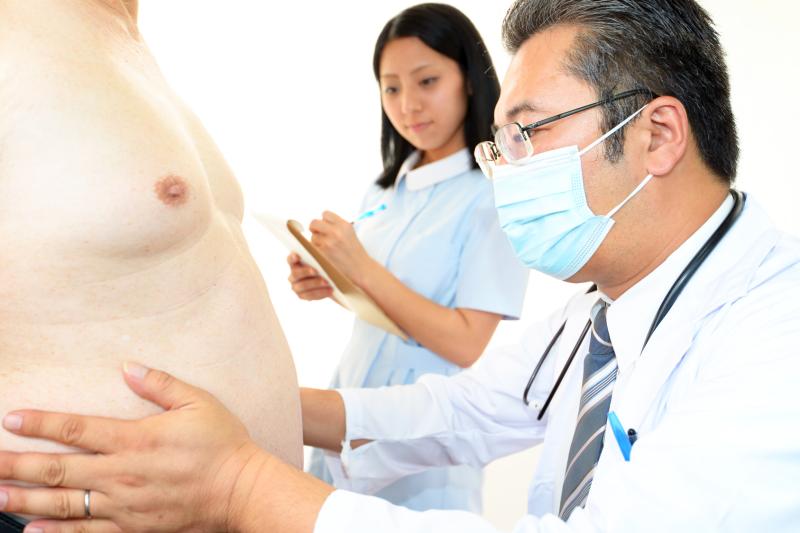
Metabolic and bariatric surgery (MBS) leads to large and sustained reductions in, and even reversal of, multiple risk factors for future joint disease in adolescents with severe obesity and musculoskeletal pain, according to data from the Teen Longitudinal Assessment of Bariatric Surgery study.
“These improvements will allow teenagers to move, be more functional and participate in physical activity to improve their joint health and maintain their weight loss,” the investigators said.
“Given that adolescents with obesity are at risk for developing osteoarthritis in midlife, our findings suggest that preosteoarthritis conditions exist in adolescents with severe obesity, but after MBS, preosteoarthritis risk factors and abnormal joint loads may be reversed,” they added.
The analysis included 219 adolescents (mean age, 17 years; median body mass index [BMI], 50 kg/m2) who underwent Roux-en-Y gastric bypass (n=152) or vertical sleeve gastrectomy (n=67) and were followed for >3 years. Joint pain and physical function outcomes were assessed by using the Health Assessment Questionnaire Disability Index (HAQ-DI), Impact of Weight on Quality of Life – Kids (IWQOL-Kids), and the Short Form 36 Health Survey (SF-36).
At baseline, two-thirds of the population had musculoskeletal and lower extremity (LE) pain, while half had poor physical function (HAQ-DI scores >0). BMI decreased by 27 percent 3 years after MBS (p=0.02), with the greatest reduction (24 percent) seen at the 6-month follow-up. Prevalent musculoskeletal and LE pain improved by 40 percent within 12 months and persisted over 3 years. [Pediatrics 2019;144:e20191399]
Each 10-percent reduction in BMI lowered the odds of having musculoskeletal pain by 6 percent (odds ratio [OR], 0.94, 95 percent confidence interval [CI], 0.92–0.99) and of having LE pain by 10 percent (OR, 0.90, 95 percent CI, 0.86–0.95).
The number of patients with poor physical function decreased from 49 percent at baseline to <20 percent at 6 months post-MBS (p<0.05). There were parallel improvements seen in the physical comfort and physical component scores of the IWQOL-Kids and SF-36 (p<0.01).
“Although most participants became pain-free, continued joint pain after MBS was predicted by self-reported poor physical function and physical health-related quality of life. Furthermore, persistent poor physical function was predicted by having musculoskeletal pain, LE pain and depressive symptoms,” the investigators noted.
“Thus, targeted intervention and prevention strategies for adolescents who are obese and have poor physical function and depressive symptoms should include a multidisciplinary approach that includes the following: (1) assessment for early joint disease; (2) treatment of pain with conservative measures including physical therapy, anti-inflammatories, and gait modifications; (3) assessment for depression; and (4) mental health and physical therapy professionals embedded in treatment teams,” they added.
Adolescence is a great time to implement exercise and behavioural supports especially after MBS to maintain long-term weight and joint health benefits, the investigators said.
Future investigation should examine the associations among weight loss, biomechanical and systemic inflammatory mechanisms, performance measures, and biomarkers to identify, target and treat adolescents who are obese and at risk of knee osteoarthritis.